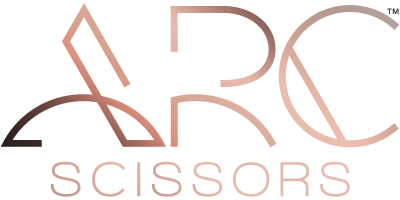SHAG 101: The Dos And Don'ts Every Stylist Needs To Know

Photo credit: Instagram via @rachelwstylist
The shag haircut is all about balance: releasing internal weight without collapsing the silhouette, maintaining movement without losing structure and creating texture that enhances—never overwhelms—the natural pattern. Achieving that requires thoughtful sectioning, tension control and, most importantly, the right level of weight removal at each stage.
ARC™ Scissors Artistic Team Member and shag expert Rachel Williams (@rachelwstylist) uses the ARC™ 30/2 Reversible Blender to achieve that perfect balance because it's designed for consistent control across varying densities and hair types. Below, she shares her go-to approach for customization, texture and precision.
1. Don’t Skip the Consultation
Because the shag removes noticeable weight, clients should understand how much hair will come off and how it will affect movement and fullness. “Always have a consultation first so the client fully understands the haircut and is not alarmed when they see so much hair being removed,” says Rachel Williams.
2. Control Weight Without Collapsing the Shape
On thick hair, weight often builds through the crown and upper layers—causing the shape to lose movement or expand too wide. “One of the biggest mistakes made when cutting a shag is taking too much weight out of the mid and bottom layers, which can create an outdated mullet,” says Rachel.
The ARC™ 30/2 Reversible Blender removes 20 percent of weight, helping stylists refine balance and diffuse heaviness while preserving strength in the silhouette.
Texturizer Tips: How To Properly Remove Weight:
-
Work on dry hair to see how the shape naturally expands before removing bulk.
-
Keep sections vertical and maintain consistent elevation to preserve structure.
-
Control tension to prevent over-removal and maintain balance.
-
Flip teeth-up through the interior for soft diffusion.
-
Use teeth-down for light surface blending and clean transitions.
3. Refine Layers While Maintaining Density
Once weight is balanced, the focus shifts to connection—making sure layers flow together without losing fullness. The ARC™ 30/2 Reversible Blender smooths transitions and refines texture without collapsing volume.
Rachel tailors her approach to each client’s natural pattern:
-
Straight hair: Cut wet, then refine dry for precision.
-
Wavy or curly hair: Cut dry to follow the curl pattern and maintain definition.
On medium to thick textures, use diagonal-forward sections to connect layers from the crown through the perimeter, keeping the scissor parallel to the natural growth pattern of the hair for a soft, cohesive blend. Working with moderate tension prevents over-removal on wavy or curly textures.
4. Detail the Fringe & Face Frame for Softness
Refinement brings the cut to life. After connecting the layers, focus on how the shape moves around the face and through the perimeter. The ARC™ 30/2 gives controlled polish—softening lines, lifting weight from the fringe and refining surface texture for a natural grow-out.

Photo credit: Instagram via @rachelwstylist
Where To Refine the Shag Haircut:
-
Fringe and Face Frame: Lighten visual weight to contour the face.
-
Perimeter Edges: Gently blend heavy corners for a soft fall.
-
Surface Lines: Break up strong transitions for natural-looking texture.
Finishing with intention keeps the haircut strong, not stripped. The goal isn’t to chase movement—it’s to let the shape move on its own. Small, precise refinements with the ARC™ 30/2 create air within the cut, maintain structure through the ends, and ensure the shag grows out balanced and effortless.
THE SHAG’S SECRET WEAPON
Stop guessing where to remove weight—see it, control it, and refine it with the ARC™ 30/2 Reversible Blender. Designed for precision movement and effortless grow-outs.
Shop the 30/2 Reversible Blender Now.




Comments on this post (0)